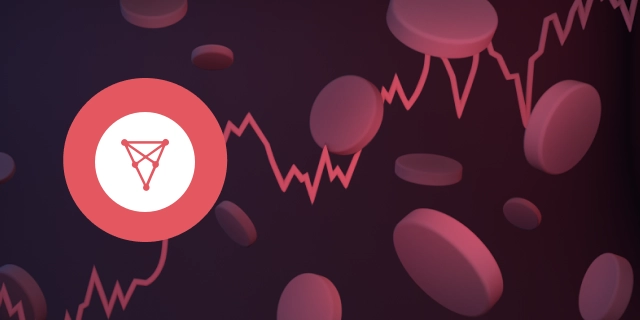Exchange your crypto now
What Is the Kaspa price prediction today
AT A GLANCE
- In 2025, Kaspa price is expected to reach $0.1522, according to some experts
- 2026 promises to be turbulent, with prices ranging from $0 to $0.2194, with PricePrediction.net predicting a breakthrough leading to a price rise to $0.2194
- By 2030, KAS price can hit $0.1522
Kaspa fundamental analysis
Kaspa is a decentralized, scalable, and secure cryptocurrency that aims to provide faster and more efficient transactions than traditional blockchains. It leverages a novel technology called blockDAG (Directed Acyclic Graph) instead of the conventional blockchain structure. This allows Kaspa to achieve high throughput and low confirmation times without compromising security.
Key features of Kaspa include:
- High scalability: The blockDAG architecture enables Kaspa to handle a large number of transactions per second (TPS), far exceeding the capabilities of most traditional blockchains.
- Low latency: Transactions on the Kaspa network are confirmed within seconds, making it ideal for real-time applications.
- Security: Kaspa employs a proof-of-work (PoW) consensus mechanism, ensuring the network remains secure and resistant to attacks.
Founding of Kaspa
Kaspa was founded in November 2021 by Yonatan Sompolinsky, a prominent figure in the blockchain research community. His work on the GHOST (Greedy Heaviest-Observed Sub-Tree) protocol laid the foundation for Kaspa's development. The motivation behind Kaspa's creation was to address the scalability and speed issues plaguing existing blockchain networks. By using a blockDAG structure, Kaspa aims to provide a more scalable and efficient solution.
After more than eight years of theoretical research and development, Kaspa publicly launched, starting from block zero without any team allocations, presale, or premine. The project emphasizes democratized decision-making processes and operates without a central company or foundation at its helm.
Kaspa technology
At the core of Kaspa's technology is the blockDAG, which allows multiple blocks to be added simultaneously, unlike the single-chain structure of traditional blockchains. This results in higher transaction throughput and faster confirmation times. Unlike traditional blockchains that can process around 7-10 transactions per second (like Bitcoin), Kaspa can handle thousands of TPS.
The consensus mechanism used by Kaspa is a proof-of-work (PoW) algorithm, ensuring security and decentralization. Compared to other technologies, Kaspa's blockDAG structure mitigates the risk of centralization and improves scalability, making it a promising alternative to blockchain. With block intervals as low as one second, Kaspa offers near-instant confirmation times, making it suitable for real-time applications.
Kaspa’s mining algorithm is kHeavyHash, which involves a matrix multiplication sandwiched between two Keccak hashes, designed for Optical Proof-of-Work. As transistors reach their physical limits, semiconductor advancements will increasingly move towards silicon photonics, which uses light instead of electricity for data transfer.
The development of early photonic-based mining devices represents the next evolution beyond ASIC devices, shifting costs from electricity (operating expenses) to investment (capital expenses). This shift will democratize mining, making it accessible globally rather than being concentrated in areas with cheap electricity. Currently, Kaspa is mineable using GPUs, with various solver implementations and mining pools available.
Kaspa also includes a unique monetary policy that decreases emissions geometrically over time based on the 12-note scale of music. Known as the chromatic phase, this policy was activated on May 7th, 2022, with a block reward of 440 KAS. The block reward will be halved once per year, but smoothly: each month, the block reward is reduced by a factor of (1/2)^(1/12). This ensures that the ratio of block rewards in consecutive months is the same as the ratio of frequencies of two consecutive semitones in a tempered chromatic scale. The initial block reward corresponds to the frequency of the note A4, and every averaged year is referred to as an octave.
Kaspa is expected to implement the next generation of the protocol. Released on October 31, 2022, on the 14th anniversary of the Bitcoin whitepaper, the DAG KNIGHT Protocol, authored by Yonatan Sompolinsky and Michael Sutton, is a parameterless generalization of the Nakamoto Consensus methodology.
This innovative protocol does not assume an upper bound to network latency, allowing it to self-adjust to real-time latency. As a result, any protocol based on DAG KNIGHT can remain secure against attackers controlling less than 50% of the network's computational power while achieving extreme speeds and throughput.
DAG KNIGHT represents a theoretical breakthrough as the first protocol to theorize and prove the feasibility of operating at a self-adjusting network latency.
Kaspa is currently undergoing a comprehensive core rewrite in RustLang, a performance-oriented programming language. This transformation will optimize the Kaspa codebase for maximum efficiency and industry-leading performance while providing documented, modularized code for future developers and laying the foundation for smart contracts.
The Rust rewrite aims to achieve unprecedented throughput, initially targeting 32 blocks per second (one block every ~31 milliseconds), with future projections reaching 100 blocks per second. Once completed, Kaspa will be the fastest and highest throughput decentralized network in the industry.
The Rust rewrite was completed in Q2 2023 and is currently undergoing public testing before being deployed to the mainnet.
Kaspa ecosystem
Kaspa's ecosystem is designed to support a wide range of applications, from simple transactions to complex decentralized applications (dApps). The ecosystem includes user-friendly wallets, exchanges that list KAS tokens, and a vibrant community of developers and users.
Components of the ecosystem:
- Wallets: Kaspa offers several wallet options, including mobile, desktop, and web wallets. These wallets provide secure storage and easy access to KAS tokens.
- Exchanges: KAS tokens are listed on multiple exchanges, facilitating trading and liquidity. Some of the popular exchanges listing KAS include TradeOgre and TxBit.
- dApps: The Kaspa network supports the development of decentralized applications, leveraging its high throughput and low latency.
- Community engagement: Kaspa has an active community on platforms like Discord, Telegram, and Reddit, where users and developers collaborate and share information.
Developer engagement:
- Open-source development: Kaspa's codebase is open-source, encouraging developers to contribute and innovate.
- Grants and incentives: The Kaspa Foundation offers grants and incentives to developers working on projects that enhance the Kaspa ecosystem.
Tokenomics of Kaspa
Kaspa's tokenomics are designed to incentivize network participation and ensure a fair distribution of rewards. The total supply of KAS tokens is capped, with a gradual release over time. The economic model includes mechanisms for inflation and deflation, balancing supply and demand. KAS tokens are used for transaction fees, staking, and governance, providing multiple use cases within the ecosystem.
Token distribution:
- Total supply: Kaspa has a capped total supply of 28.7 billion KAS tokens, with a gradual release over time. As of July 23, 2024, the total supply of KAS tokens is 24,262,668,969 KAS.
- Circulating supply: As of the time of writing on July 23, 2024, the circulating supply is 24,263,882,457 KAS.
- Initial distribution: Tokens were distributed through mining, ensuring a fair and decentralized initial distribution.
- Inflation and deflation: The network's reward structure includes periodic halvings, similar to Bitcoin, to control inflation and encourage long-term holding.
Partnerships and collaborations
Partnerships play a crucial role in Kaspa's growth and adoption. The project has established several notable partnerships that enhance its technological capabilities and market reach.
Notable partnerships:
- Flux Network: Kaspa has partnered with Flux, a decentralized cloud infrastructure provider. This collaboration enables Kaspa to leverage Flux's robust cloud computing platform for enhanced scalability and deployment of decentralized applications (dApps).
- Swapzone: Through its partnership with Swapzone, a cryptocurrency exchange aggregator, Kaspa has increased its accessibility and liquidity. This partnership allows users to easily exchange KAS tokens with a variety of other cryptocurrencies, enhancing Kaspa's usability and adoption.
- TradeOgre: Kaspa is listed on TradeOgre, a popular cryptocurrency exchange known for listing promising and emerging cryptocurrencies. This listing provides liquidity and trading opportunities for KAS tokens, attracting a broader user base.
Future potential collaborations
Kaspa is exploring interoperability with other blockchain networks to enhance functionality and provide seamless cross-chain transactions. This includes potential collaborations with projects focusing on decentralized finance (DeFi) and non-fungible tokens (NFTs).
Kaspa also aims to partner with enterprises to develop blockchain solutions for real-world applications. This includes sectors such as supply chain management, healthcare, and finance, where blockchain can provide transparency, security, and efficiency.
Kaspa live price chart
In March, the KAS price bounced between $0.16 and $0.148 till the middle of the month. From March 14 till March 20 the token experienced another downtrend with its price dropping to $0.11. Then again it showed some gains in the following 3 days, reaching $0.147 by March 23. After that the trend flipped again and the KAS token price kept going down till it reached $0.12 on April 4.
During the next week, the token price was growing again, reaching $0.14 again. It kept going up for another 4 days and on April 12 traders paid $0.1457. Just 2 days later the price dropped as low as $0.11 and stayed around this level for another week. After a short jump to $0.129 on April 24 the KAS price chart declined again and by the first days of May, it was already at $0.10.
Finally from May 6, the situation started to improve for the Kaspa network native token as its price chart established a strong downtrend. By May 10 the value of the KAS token reached $0.12 and continued growing. By May 28 to swap KAS traders paid $0.14, then the value went down to $0.13 by June 1, but from June 2 jumped up again, reaching $0.1782 by June 6. The price couldn’t remain this high for longer than a day and dropped to $0.16 by June 9. In the next few days, the KAS price chart kept bouncing between $0.17 and $0.15 but dropped lower to $0.14 by June 20.
From this dip, the KAS price chart went up again and by July 1 was already trading for $0.19. However, it was corrected again during the next week that took the value of the KAS token down to $0.15, and then again up to $0.16 by July 13. In the next 3 days, the value grew to $0.182 and kept declining slightly till the time of writing on July 23.
Kaspa technical analysis
Exchange your crypto now
Kaspa price prediction
Kaspa price predictions summary
Kaspa price prediction for 2025
Kaspa price prediction for 2026
Kaspa price prediction for 2027
Kaspa price prediction for 2028
Kaspa price prediction for 2030
Summary
According to the current price chart indicators and the overall state of the crypto market, the KAS price chart looks quite positive at the moment. However, market experts don’t foresee much gain from the Kaspa price chart in the near future. In the coming week, the token will most probably go down with the possibility to show some more gains in the coming month.
About SwapSpace
SwapSpace is a cryptocurrency exchange aggregator that allows to swap over 4100 cryptos with both fixed and floating rates. We gather the rates of major crypto exchanges on the market onscreen and let our users compare and choose whatever option they like the most. We don’t add any fees over the partners’ rates, which makes the exchanges via SwapSpace profitable. The exchange time is no longer than at any of our integrated services starting from 10 minutes. SwapSpace support works 24/7.Exchange your crypto now




Leave a comment